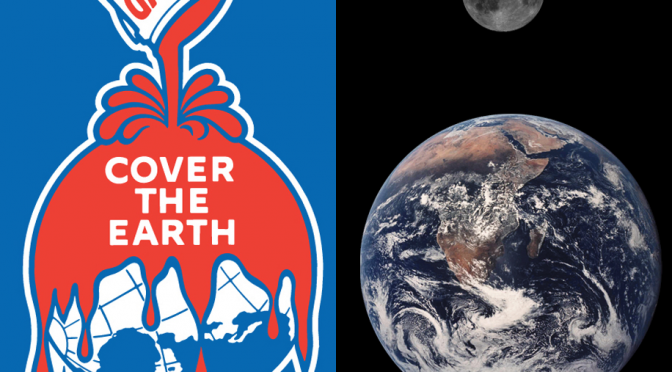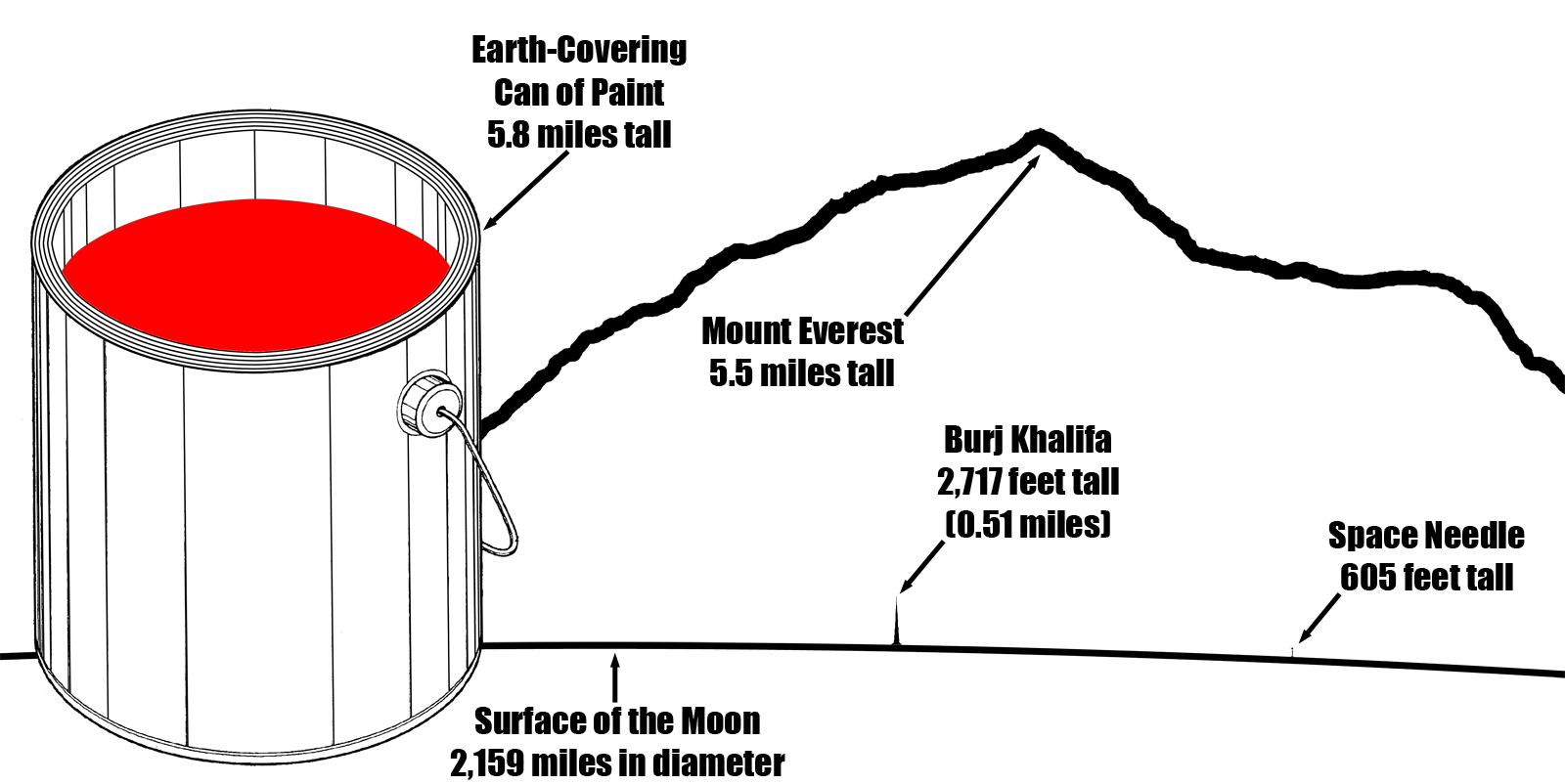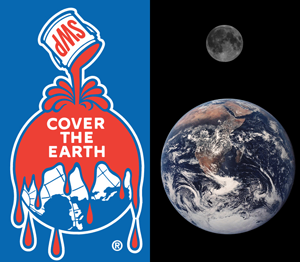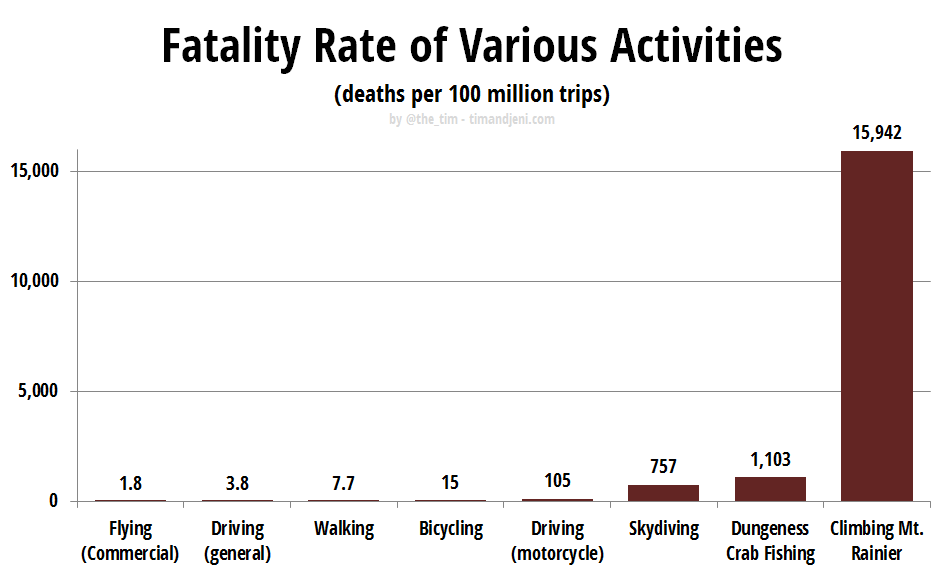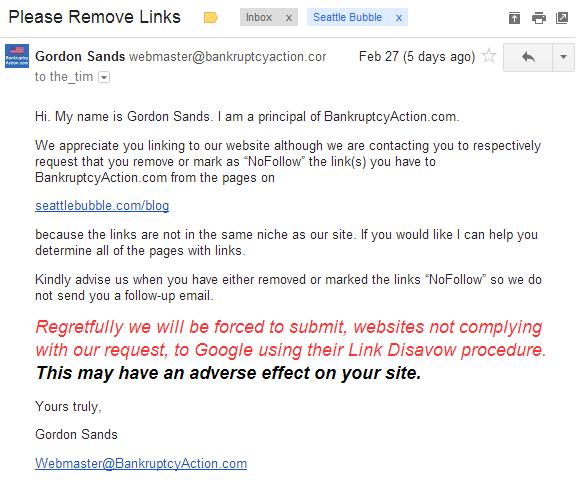If you’ve done any painting lately, you’ve probably encountered the Sherwin Williams logo:
The visual of a can of paint larger than the moon being poured over Earth has always been something of a curiosity to me. Setting aside the obvious environmental concerns (to put it lightly) of literally covering the planet in paint, I can’t help but wonder when I see that image: How much paint would it really take to “Cover the Earth”?
A similar question was tackled by the venerable Randall Munroe in a February entry of his “What If?” series, but the question he was addressing was slightly different (“Has humanity produced enough paint to cover the entire land area of the Earth?”). I want to know how much paint it would take to literally pour out a can and have it completely cover the planet—land, water, and all.
Let’s figure out just how big that giant planet-destroying Sherwin Williams paint can would really need to be in order to “Cover the Earth” with one coat of paint.
We’ll start with the surface area of Earth, which comes in at 196.9 million square miles.
Although the logo shows the planet-painting in progress rather than complete, we’re going to assume given the amount of coverage shown, the large splash at the top, and the fact that the can is tipped almost completely over that there was enough paint in the can to cover the entire planet once over with a standard coat of exterior paint.
For this project we’ve selected Sherwin Williams Resilience™ Exterior Acrylic Latex Paint. Here’s the product description:
Don’t let weather worries ruin your painting schedule. Resilience® Exterior Acrylic Latex paint gives painted exteriors exceptional moisture resistance so you don’t have to postpone painting when the forecast calls for rain, or quit working early in the day because you’re concerned about dew. You can apply Resilience in temperatures as low as 35°F.
Sounds perfect. Plus, the base color is Red, just like the logo. According to the technical data sheet, Resilience paint covers 350 to 400 square feet per gallon. We’ll go with the midpoint of that range and assume that a gallon of paint covers 375 square feet of Earth on average.
Now it’s time for a bit of math. One mile is 5,280 square feet, so a square mile is 5,280 feet * 5,280 feet = 27,878,400 square feet. Multiply the 196.9 million square mile surface area of Earth by 27.9 million and we get 5.5 quadrillion square feet. Divide that by our 375 square feet per gallon coverage and we come to 14.6 trillion gallons of paint to cover the planet in one coat of Sherwin Williams Resilience™ Exterior Acrylic Latex Paint.
So how big would that giant SWP paint can need to be in order to hold 14.6 trillion gallons? A standard 1-gallon paint can measures 6⅝” diameter by 7½” height, occupying total volume of 1.12 gallons. If we assume that our mega-can would be the same shape, just scaled up, we’ll end up with a can of paint that has a diameter of 2.6 miles and is 5.8 miles tall.
Here’s a visualization of our Earth-covering can of paint in comparison to some recognizable landmarks:
That’s a pretty big paint can, but it’s actually a lot smaller than the moon, which has a diameter of 2,159 miles. Note the surface of the moon in the visualization, to give you a sense of scale.
So, what if we actually had a can of paint with as much volume as the moon, as shown in the logo?
The volume of the moon is 2.1958×1010 km³, or roughly 5.8×1021 gallons, which is 397,260,274 times as much volume as our Earth-covering paint can. Let’s round that up slightly to a nice even 400 million coats of paint.
At 375 square feet per gallon, each coat of paint would be 0.00428 inches thick. It’s probably a little thinner when it dries, but with as much as we’re going do dump out on the planet, I don’t think that will happen for quite a while.
If you poured this moon-sized can of paint over Earth, the entire planet would be covered in about 27 miles of Sherwin Williams Resilience™ Exterior Acrylic Latex Paint. (Actually it wouldn’t go quite that deep, since the deeper it gets the bigger the surface area we’re covering with each layer.)
I’m no painting expert, but I think that would be going a little overboard.
Note: The coverage of a moon-sized paint can calculated at the end has been corrected. Thanks to the /r/theydidthemath user who pointed out my error.
